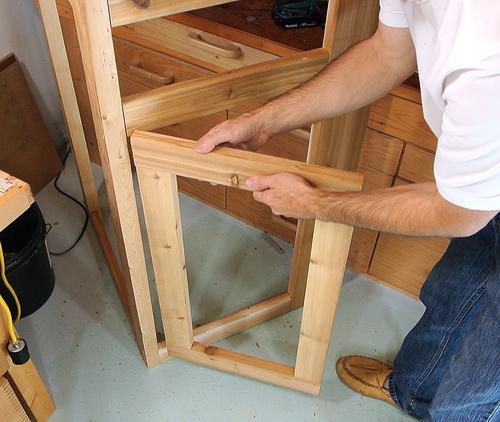 I needed some hinges that would allow the door of a cabinet I was
building to swing open and also be easily removed.
I needed some hinges that would allow the door of a cabinet I was
building to swing open and also be easily removed.
 I needed some hinges that would allow the door of a cabinet I was
building to swing open and also be easily removed.
I needed some hinges that would allow the door of a cabinet I was
building to swing open and also be easily removed.

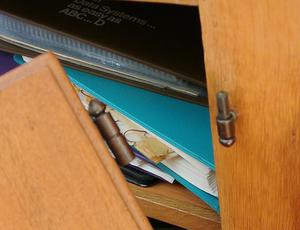 So I made some wooden hinges, patterned on the wooden hinges my dad
used to build for his cabinets. And those hinges were inspired by
these detachable hinges that my dad used to get from Germany.
So I made some wooden hinges, patterned on the wooden hinges my dad
used to build for his cabinets. And those hinges were inspired by
these detachable hinges that my dad used to get from Germany.
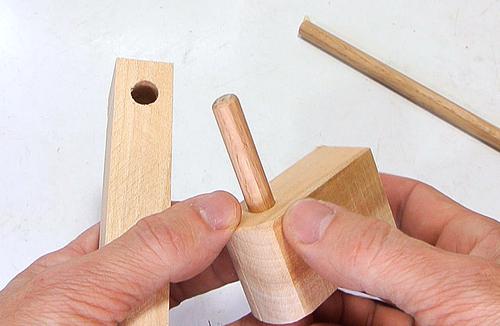 The hinge pin is a 3/8" dowel. The door part has 25/64" hole (1/64 or 0.4 mm larger
than the dowel). This allows the door part of the hinge to turn freely
on the pin but without too much play.
The hinge pin is a 3/8" dowel. The door part has 25/64" hole (1/64 or 0.4 mm larger
than the dowel). This allows the door part of the hinge to turn freely
on the pin but without too much play.
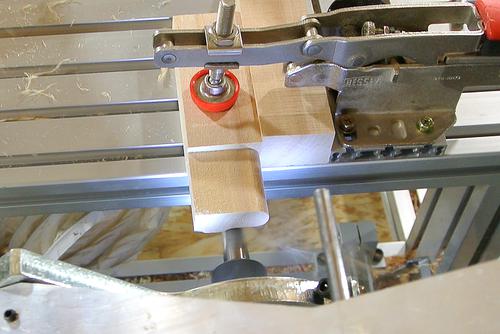
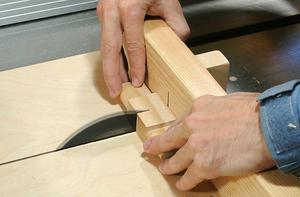 A tricky bit is mounting the hinge pin to the cabinet.
Like my dad used to, I decided to mortise
the hinge mount into the cabinet.
A tricky bit is mounting the hinge pin to the cabinet.
Like my dad used to, I decided to mortise
the hinge mount into the cabinet.
I used my new all metal pantorouter to cut a tenon on either end of a piece of wood, then cut it in half to make the two hinge mounts.
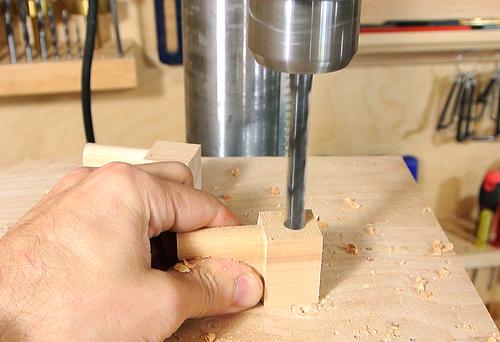
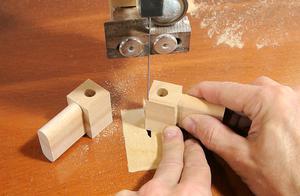 The fixed part gets a 3/8" hole for a tight fit with the dowel.
The fixed part gets a 3/8" hole for a tight fit with the dowel.
I also rounded the corners of the hinge mount, just to make it look nice.
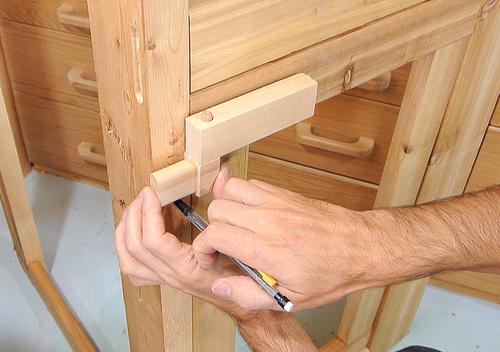 Next, laying out where the hinge will go and marking the mortise location.
Next, laying out where the hinge will go and marking the mortise location.
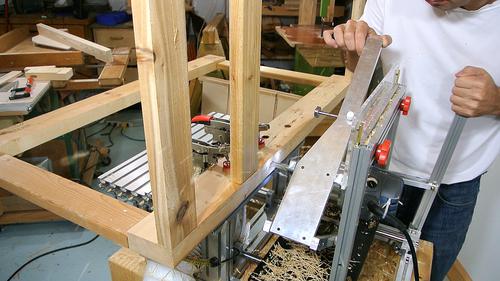
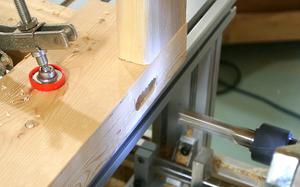 I used my pantorouter to cut the mortises.
I mounted the whole cabinet to the table.
With the workpiece fixed and the router moving,
I didn't have to worry about overstressing any bearings doing this.
I used my pantorouter to cut the mortises.
I mounted the whole cabinet to the table.
With the workpiece fixed and the router moving,
I didn't have to worry about overstressing any bearings doing this.
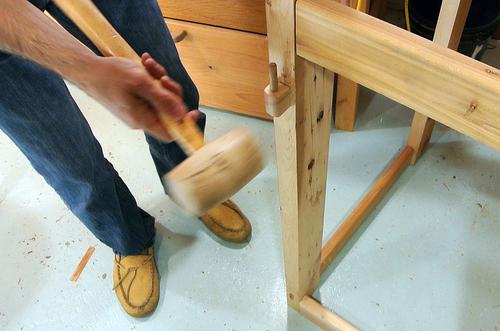 Installing the hinges. A bit of a tight fit - they hold quite well without glue,
the challenge may be to get them back out to add glue!
Installing the hinges. A bit of a tight fit - they hold quite well without glue,
the challenge may be to get them back out to add glue!
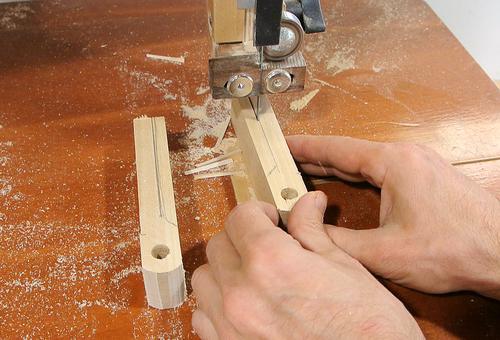
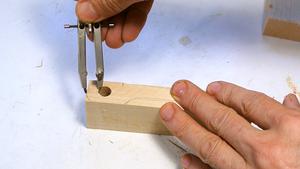 Doing a bit of shaping to the door part of the hinges to make them less bulky.
Doing a bit of shaping to the door part of the hinges to make them less bulky.
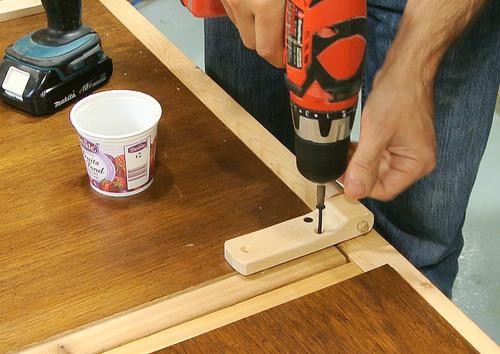
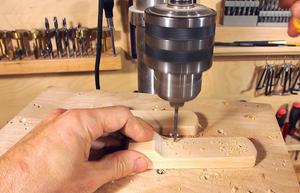 With the door clamped in place and shimmed for an even gap all around,
installing the hinges.
With the door clamped in place and shimmed for an even gap all around,
installing the hinges.
Because this will only go in a garage, I don't care about screws showing.
My dad always used one screw and glue, then put a decorative plug over the screw.
Wooden hinges like this can be squeeky, but some wax on the hinge pins cures that. I heated the pins with a heat gun before applying the wax to get more of it to stick.
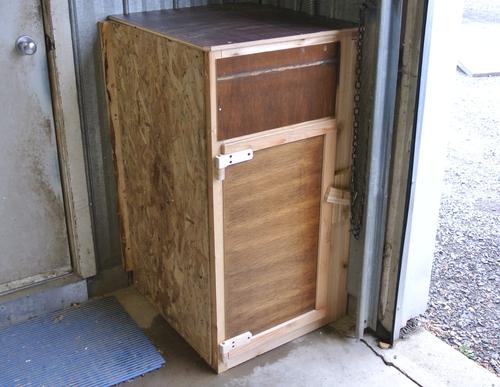 And you may wonder, what is this cabinet for?
And you may wonder, what is this cabinet for?
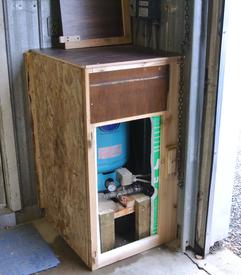 Part of the water supply for a rural property is in a
big garage that used to be
heated, but will be unheated moving forward. So I built an insulated cabinet
to keep the water from freezing in the winter.
But in the summer, to prevent the inside from getting damp from condensation,
the door will be removed.
Part of the water supply for a rural property is in a
big garage that used to be
heated, but will be unheated moving forward. So I built an insulated cabinet
to keep the water from freezing in the winter.
But in the summer, to prevent the inside from getting damp from condensation,
the door will be removed.